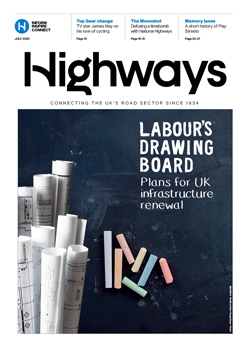The connected vehicle technology company Cohda Wireless says it has successfully demonstrated its vehicle-to-everything solution to prevent a car crash in the centre of the Australian city of Adelaide.
It says its trial proved the potential for connected self-driven vehicles to “make our streets much safer than they are” and that Cohda’s technology is effective even in the most challenging of environments – the so-called ‘urban canyons’ of a typical city.
In an area covering two city blocks just east of Adelaide’s iconic Victoria Square, the demonstration replicated a scenario in which two vehicles approach a four-way intersection at right angles to each other. Car Two, driven by a human, fails to adhere to the red-light signal and approaches the intersection at speed, intending to ‘skip’ the red light. Car One, a connected autonomous vehicle, is approaching the intersection from another direction and intends to proceed through the intersection on the green light. In a real-life scenario, there would be a risk of a collision as human drivers will invariably approach the intersection when the light is green, fully confident that all other road users will obey the traffic signals. In an instance where Car Two disobeyed the traffic signal and Car One was unable to see the approaching danger, due to visibility being obstructed by buildings or other infrastructure, a collision would be especially likely.
But Cohda Wireless’s Chief Technical Officer Professor Paul Alexander said that his trial shows that if the vehicles were connected using Cohda’s V2X technology, a potential collision situation would be detected and avoided well in advance of it actually happening.
“We demonstrated that when vehicles are connected to each other using our smart V2X technology, Car One, the connected autonomous vehicle, would detect that Car Two is approaching the red light at speed and is probably not going to stop. This allows the connected autonomous vehicle to pre-emptively identify and respond to the threat by slowing down and stopping.
“Cohda’s V2X technology allows vehicles to ‘speak to each other’ to extend their perception horizon.
“The technology provides the vehicle with an awareness of its environment and risk factors associated with it, consistently and accurately up to ten times per second, enabling it to make decisions that a human being would not be capable of making as the driver of the vehicle.”
Cohda’s Smart Cars Smart City initiative has been funded by the South Australian Department of Transport and Infrastructure’s Future Mobility Lab Fund. In June this year, Cohda Wireless took ownership of two specially-modified vehicles from the USA which it is using in advanced trials of its world-leading V2X (Vehicle-To-Everything) technology. The two Lincoln MKZ sedans were fitted with the ADAS (Advanced Driver Assistance Systems), ROS (Robot Operating System) various sensors including Lidar, Radar, cameras, GPS as well as in-vehicle compute platform and Cohda’s GNSS- independent positioning technology. The fusion and cooperation of the various sensors and Cohda’s V2X technology augment the vehicles’ perception capability and make the autonomous vehicles features more practical, to include threat detection, the dangers associated with blind intersections and vulnerable road users.
“Our goal today was not only to demonstrate the efficacy of our technology in enabling self-driven vehicles to communicate with each other but also to do so in a city environment where so-called ‘urban canyons’ significantly affect the ability of systems reliant on Global Navigation Satellite Systems (GNSS) to achieve accurate positioning,” added Prof Alexander.
“The area in the city of Adelaide in which the trial was conducted was one such urban canyon where positioning through GNSS can be off by up to 40 metres, but with our V2X Locate technology positioning accuracy is improved to within a metre.”
Cohda Wireless added that it demonstrated the efficacy and accuracy of its V2X-Locate system in a 2017 trial in New York City where it repeatedly demonstrated sub-metre accuracy while driving along Sixth Avenue, which has the city’s tallest buildings. Comparably tested GPS-based systems were as much as tens of metres off-course, at times showing cars driving through buildings.
Cohda’s V2X technology underpins and complements other technology used by autonomous vehicles such as cameras, sensors, radars and lidars by enabling cooperative perception.
“The role of technology in making our roads safer is probably not generally understood but we hope that this demonstration has helped to prove that with the appropriate technology and infrastructure, connected self-driving vehicles are safer to have on our roads than vehicles controlled entirely by human beings”, added Professor Alexander.





